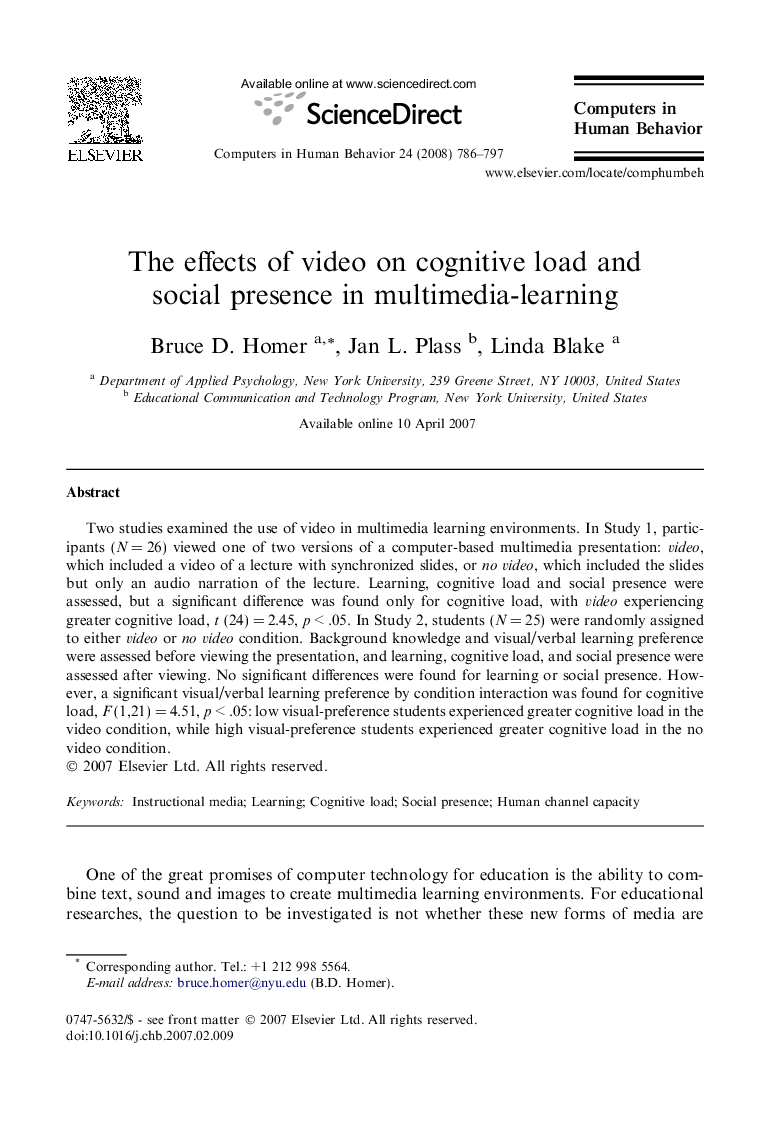| Article ID | Journal | Published Year | Pages | File Type |
|---|---|---|---|---|
| 351678 | Computers in Human Behavior | 2008 | 12 Pages |
Two studies examined the use of video in multimedia learning environments. In Study 1, participants (N = 26) viewed one of two versions of a computer-based multimedia presentation: video, which included a video of a lecture with synchronized slides, or no video, which included the slides but only an audio narration of the lecture. Learning, cognitive load and social presence were assessed, but a significant difference was found only for cognitive load, with video experiencing greater cognitive load, t (24) = 2.45, p < .05. In Study 2, students (N = 25) were randomly assigned to either video or no video condition. Background knowledge and visual/verbal learning preference were assessed before viewing the presentation, and learning, cognitive load, and social presence were assessed after viewing. No significant differences were found for learning or social presence. However, a significant visual/verbal learning preference by condition interaction was found for cognitive load, F (1,21) = 4.51, p < .05: low visual-preference students experienced greater cognitive load in the video condition, while high visual-preference students experienced greater cognitive load in the no video condition.
